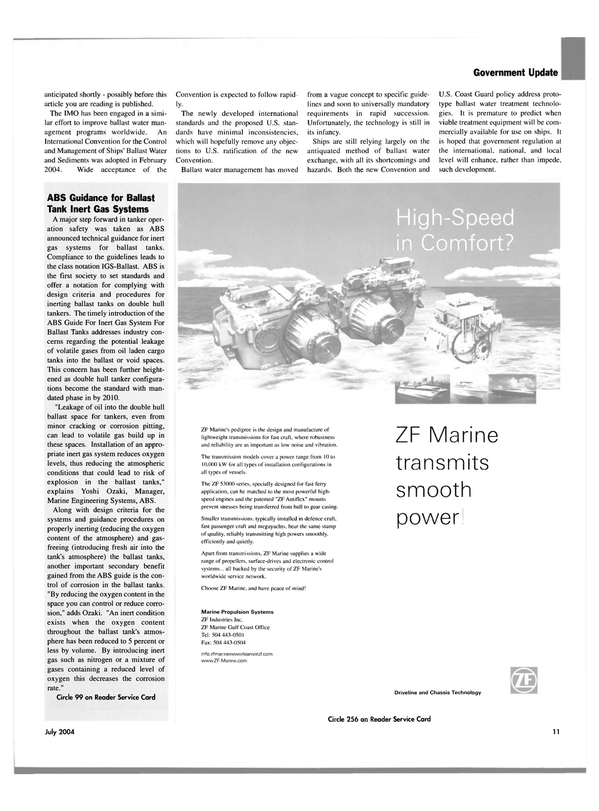
ABS Guidance for Ballast Tank Inert Gas Systems
A major step forward in tanker operation safety was taken as ABS announced technical guidance for inert gas systems for ballast tanks.
Compliance to the guidelines leads to the class notation IGS-Ballast. ABS is the first society to set standards and offer a notation for complying with design criteria and procedures for inerting ballast tanks on double hull tankers. The timely introduction of the ABS Guide For Inert Gas System For Ballast Tanks addresses industry concerns regarding the potential leakage of volatile gases from oil laden cargo tanks into the ballast or void spaces.
This concern has been further heightened as double hull tanker configurations become the standard with mandated phase in by 2010.
"Leakage of oil into the double hull ballast space for tankers, even from minor cracking or corrosion pitting, can lead to volatile gas build up in these spaces. Installation of an appropriate inert gas system reduces oxygen levels, thus reducing the atmospheric conditions that could lead to risk of explosion in the ballast tanks," explains Yoshi Ozaki, Manager, Marine Engineering Systems, ABS.
Along with design criteria for the systems and guidance procedures on properly inerting (reducing the oxygen content of the atmosphere) and gasfreeing (introducing fresh air into the tank's atmosphere) the ballast tanks, another important secondary benefit gained from the ABS guide is the control of corrosion in the ballast tanks.
"By reducing the oxygen content in the space you can control or reduce corrosion," adds Ozaki. "An inert condition exists when the oxygen content throughout the ballast tank's atmosphere has been reduced to 5 percent or less by volume. By introducing inert gas such as nitrogen or a mixture of gases containing a reduced level of oxygen this decreases the corrosion rate." Circle 9 9 o n Reader Service C a rd
Read ABS Guidance for Ballast Tank Inert Gas Systems in Pdf, Flash or Html5 edition of July 2004 Maritime Reporter
Other stories from July 2004 issue
Content
- Ballast Water Management Acquiring Teeth page: 9
- ABS Guidance for Ballast Tank Inert Gas Systems page: 11
- New Crowley Tug Joins Fleet page: 12
- Hawaiian Catamaran: Environmental Awareness In Comfort page: 13
- Lake Express Vessel Enters Service page: 14
- ARL Releases ShipConstructor2005 page: 16
- Complete Vessel Structure Modeling and Part Nesting by Autoship page: 16
- PCU Jimmy Carter Christened page: 21
- And Then There Were Two page: 22
- Offshore Drilling: 5-Year Projection is $189B page: 24
- USCG Accelerates OPC Program page: 24
- Cianbro earns Maritime Stripes page: 26
- German RoRo Bastion page: 29
- Rigdon Marine: PSV Orleans Now Working page: 34
- MAN B&W Debuts 32/40CR Engine in Austria page: 37
- Hoegh Fleet Assessed $ 3 . 5 M Waste Dumping Fine page: 40
- Secure Seas, Open Ports page: 42
- Implementing the Strategy page: 44
- In U.S. Waters & On U.S. Shores page: 46
- Joint Bulker Project Seeks Industry Input page: 55


